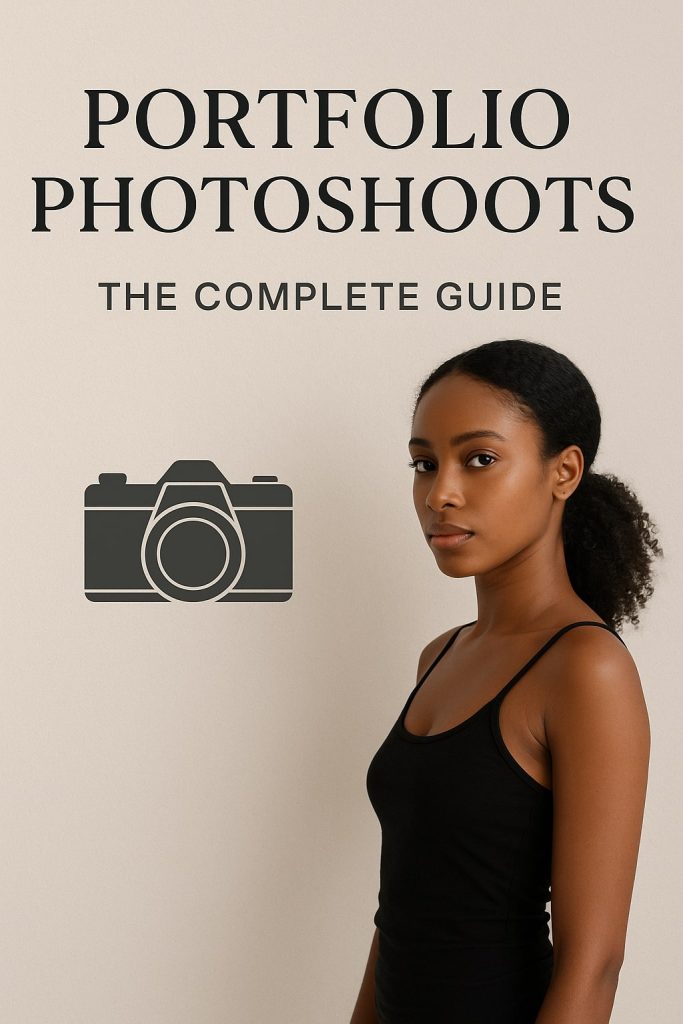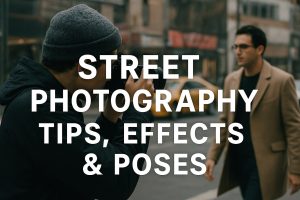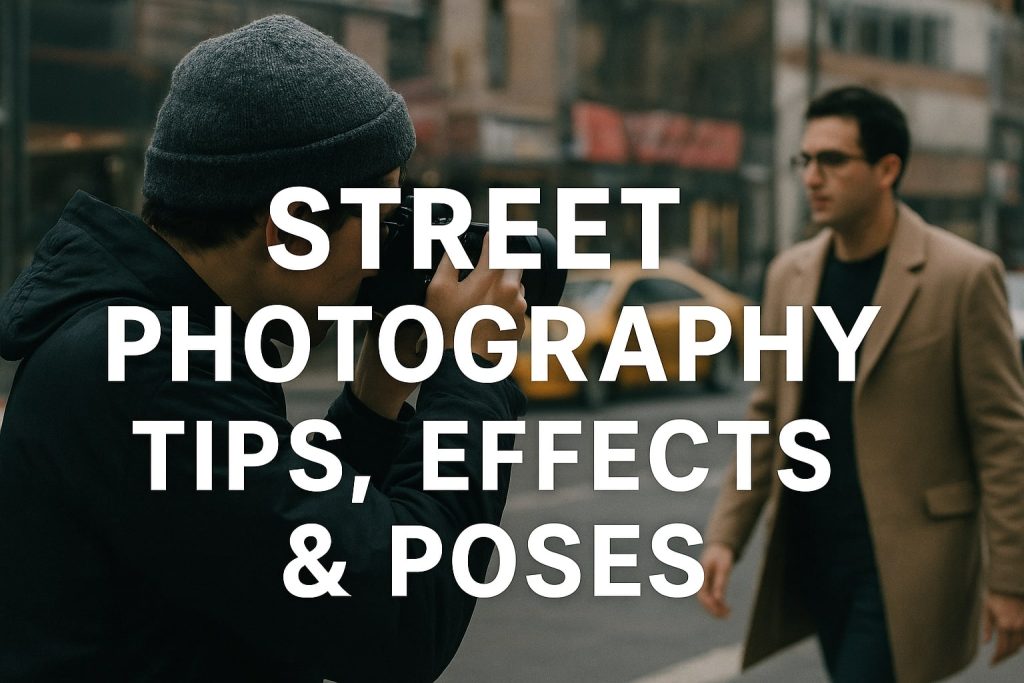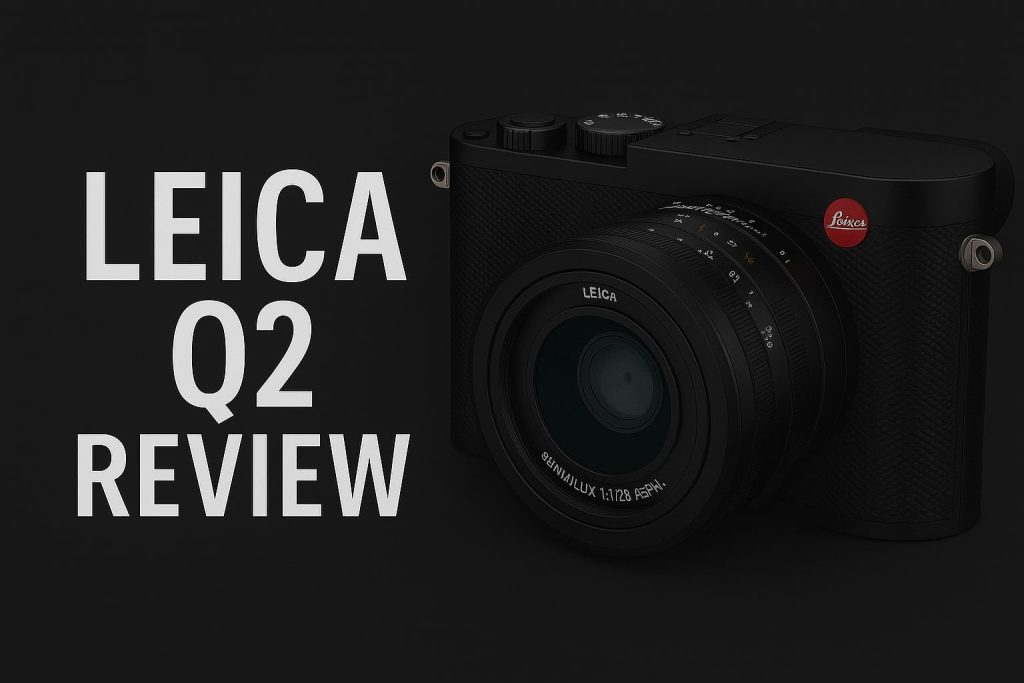” Discover how to plan, style, and execute stunning portfolio photoshoots that showcase your skills, personality, and versatility. This comprehensive guide covers professional tips, posing ideas, gear suggestions, and industry insights for models and photographers.”
Introduction – Why Portfolio Photoshoots Are the Cornerstone of a Photographer’s Career
A well-crafted portfolio photoshoot is more than a collection of images. It’s your professional handshake, your creative résumé, and your silent elevator pitch rolled into one. When executed thoughtfully, it becomes the single most powerful tool to attract clients, collaborators, and career-changing opportunities.
Whether you’re a portrait photographer, a fashion shooter, or a commercial creative, your portfolio is what sets you apart in a competitive industry. Every photo you include should tell a story, demonstrate technical skill, and reflect your signature style. In short, your portfolio should make someone think, “I want them to shoot for me.”
In this guide, we’ll break down how to plan, shoot, and showcase a portfolio that not only gets noticed but also converts attention into bookings. You’ll get actionable steps, real-world case studies, examples of what works (and what doesn’t), and advanced tips to elevate your work beyond the average.
Section 1: Defining the Purpose of Your Portfolio Photoshoot
Before you pick up your camera, you must define why you’re shooting this portfolio in the first place. This clarity shapes every decision that follows—from the subjects you choose to the post-processing style you apply.
Key Questions to Ask Yourself
- Is this portfolio meant to attract commercial clients or individual customers?
- Are you focusing on a single niche (e.g., fashion editorials) or showcasing versatility?
- Do you need to appeal to local clients, or are you targeting a global audience?
Example:
A wedding photographer who wants to book more destination weddings should craft a portfolio showcasing romantic, cinematic couple portraits in stunning outdoor locations. The tone, style, and color grading should align with that target market’s taste.
Case Study – “Elena’s Bridal Leap”
Elena, a mid-career photographer, was getting steady local bookings but wanted to break into luxury destination weddings. She restructured her portfolio to feature only high-end venues, styled shoots with couture dresses, and editorial-quality storytelling. Within six months, she booked two weddings in Italy and one in Bali—each directly linked to inquiries from her updated portfolio.
Section 2: Choosing a Niche or Style That Represents You Best
Your portfolio photoshoot should reflect a clear, consistent style. A scattered, inconsistent portfolio confuses potential clients, while a focused one builds trust and recognition.
Finding Your Style
- Analyze your past work: What types of images do you consistently enjoy shooting and editing?
- Look at your best feedback: Which photos have generated the most client praise or social media engagement?
- Evaluate market demand: Your passion matters, but aligning with profitable niches ensures sustainability.
Example Niches for Portfolio Photoshoots:
- Fashion Editorial – Bold lighting, stylized posing, and trend-driven wardrobe.
- Lifestyle Portraits – Natural light, authentic interactions, and storytelling scenes.
- Corporate Headshots – Clean backgrounds, flattering angles, and confidence-building expressions.
Pro Tip: Even if you shoot multiple genres, create separate portfolios for each. This ensures you’re always showing the most relevant work to the right audience.
Section 3: Planning Your Portfolio Photoshoot Like a Pro
Successful portfolio photoshoots don’t happen by accident—they’re meticulously planned.
Pre-Production Checklist
- Concept Development – Define your shoot theme and visual style.
- Model Selection – Choose subjects who reflect the image you want to project.
- Location Scouting – Match your backdrop to your shoot’s mood.
- Wardrobe & Styling – Align clothing with your chosen theme and audience taste.
- Props & Set Design – Add elements that enhance, not distract, from your subject.
Case Study – “Marcus’ Urban Fashion Shoot”
Marcus wanted to attract streetwear brands. He spent two weeks scouting graffiti-covered alleys, hired models with strong urban fashion appeal, and curated a wardrobe with bold patterns. The resulting portfolio images landed him a collaboration with a sneaker brand that discovered him on Instagram.
Section 4: Selecting the Right Equipment for Impactful Shots
Your gear doesn’t define your talent, but the right tools can help you achieve the exact look you’re going for.
Camera Choices
- Full-Frame DSLR or Mirrorless – Best for low light and high-quality detail.
- APS-C Mirrorless – Great balance of portability and quality.
- Medium Format – Ideal for high-end commercial or fashion work.
Lens Selection for Portfolio Photoshoots
- 50mm Prime – Versatile, flattering for portraits.
- 85mm Prime – Perfect for headshots and bokeh-rich backgrounds.
- 24–70mm Zoom – Flexible for multiple compositions in one shoot.
Pro Tip: Always carry at least one backup camera body and battery pack. Nothing kills a portfolio shoot faster than technical failure.
Section 5: Location Selection & Scene Design
The right setting can transform a simple image into a portfolio centerpiece.
Factors to Consider
- Lighting Conditions – Natural vs. artificial light availability.
- Background Aesthetics – Clean, non-distracting backdrops keep the focus on your subject.
- Relevance to Concept – Every location should enhance the narrative of your shoot.
Example:
For a high-fashion editorial, an abandoned industrial warehouse can add grit and contrast to elegant wardrobe styling.
Case Study – “Priya’s Rustic Glam Series”
Priya blended vintage glam outfits with a rural barn setting. The unexpected contrast between elegance and rustic textures became her signature style and helped her secure a magazine feature.
Section 6: Lighting Mastery for Portfolio-Worthy Shots
Lighting can make or break a portfolio photoshoot. Even a great concept falls flat without proper illumination.
Types of Lighting to Master
- Natural Light – Soft and flattering during golden hour.
- Studio Strobes – Control and consistency for commercial work.
- Continuous LED Panels – Great for creative effects and mixed lighting setups.
Pro Tip: Learn to shape light with modifiers like softboxes, reflectors, and grids. This allows you to add dimension, control shadows, and direct viewer attention exactly where you want it.
Example:
A lifestyle photographer shooting in an apartment may position the subject near a large window, using a reflector to bounce light back onto the shadow side of the face. This creates depth while keeping the natural, authentic feel intact.
Section 8: Lighting Techniques That Flatter Models in Portfolio Photoshoots
Lighting is one of the most powerful tools in shaping the mood, depth, and professional quality of portfolio photoshoots. Poor lighting can flatten features and dull the vibrancy of a scene, while great lighting can transform an average image into a showpiece worthy of your portfolio.
8.1 Natural Light Mastery
Natural light can create beautiful, organic tones and soft transitions between highlights and shadows.
- Golden Hour Advantage – Shooting within the hour after sunrise or before sunset offers a warm, flattering glow. This works exceptionally well for skin tones and adds an ethereal quality to outdoor portfolio photoshoots.
- Open Shade – Using shaded areas (e.g., under trees, next to buildings) avoids harsh shadows and keeps skin tones even.
Example:
A Mumbai-based portrait photographer built her entire fashion portfolio using only golden hour and open shade lighting. Her work stood out in competitions because the lighting enhanced the models’ natural beauty without over-reliance on post-processing.
8.2 Studio Lighting Control
For those seeking consistent results, studio lighting offers full creative control.
- Three-Point Lighting – Key light, fill light, and backlight work together to sculpt the subject’s face and body, adding dimension.
- Softboxes & Beauty Dishes – Soft light modifiers help avoid unflattering shadows and harsh contrast, perfect for high-end beauty and model portfolio shots.
Case Study:
A New York commercial photographer used a beauty dish combined with a soft rim light to create high-contrast yet flattering shots for a model’s comp card. The lighting setup emphasized bone structure and added a premium fashion-magazine feel.
8.3 Creative Lighting for Artistic Flair
Not all portfolio photoshoots need traditional lighting setups. Experimentation can help your portfolio stand out.
- Colored Gels – Add mood or match the shoot’s theme. For example, teal and orange gels create cinematic vibes.
- Backlit Silhouettes – Positioning the model in front of a strong light source creates striking silhouettes that convey mystery or elegance.
Example:
An Indonesian fashion photographer introduced colored gels into an editorial shoot. This bold approach landed him a magazine spread because it gave a modern, avant-garde twist to a standard model portfolio.
Pro Tip:
Always test lighting on a stand-in or assistant before bringing the model in. This reduces downtime, keeps the flow professional, and ensures every shot is intentional.
Section 9: Posing Strategies for Dynamic and Engaging Portfolio Shots
A model’s pose can communicate confidence, elegance, and personality — or, if poorly directed, awkwardness and stiffness. Strong posing direction ensures that portfolio photoshoots look professional and compelling.
9.1 Understanding Body Language
- Confidence in Stance – Slight weight shifts and elongated posture make models look poised.
- Micro-Movements – Small changes in hand placement, shoulder angle, or chin tilt can transform a shot without breaking the flow.
Example:
During a corporate lifestyle shoot, the photographer avoided rigid “hands by the side” poses. Instead, they had the subject lean casually against a desk while holding a coffee cup. This subtle direction gave the final images a natural, approachable energy.
9.2 Angles that Flatter
- Camera Height – Shooting slightly above eye level can slim the face and open the eyes, ideal for headshots.
- Dynamic Lean – Leaning slightly toward the camera creates engagement and a sense of intimacy.
Case Study:
In a Paris fashion portfolio shoot, the photographer positioned the camera at a 15-degree angle from the model’s face. This highlighted her jawline and gave the images a high-fashion edge, helping her secure agency representation.
9.3 Avoiding Repetitive Poses
One of the biggest pitfalls in portfolio photoshoots is monotony.
- Rotate between standing, seated, and movement shots.
- Alternate facial expressions to capture versatility.
Example:
A Delhi-based photographer planned a “pose map” with 15 varied setups for a model’s day-long shoot. The resulting portfolio felt dynamic, making her stand out in a pool of candidates during casting calls.
Pro Tip:
Instead of saying “relax” (which often makes models more tense), give specific actions like “look over your shoulder as if you’ve just heard someone call your name.”
Section 10: Post-Processing Techniques for Professional Portfolio Presentation
Even the best-shot images often need subtle refinement. Post-processing should enhance, not overshadow, the original capture.
10.1 Color Grading for Mood
- Warm Tones for lifestyle and outdoor shots to evoke friendliness.
- Cool Tones for editorial and fashion shoots to give a sleek, modern vibe.
Example:
A wedding-to-fashion crossover photographer applied a muted cinematic grade to unify a model’s diverse shoot locations. This consistency elevated the overall portfolio photoshoot presentation.
10.2 Retouching without Overdoing
- Skin Retouching – Remove blemishes but retain natural texture. Over-smoothing can make the subject look plastic.
- Dodge & Burn – Subtly shape facial features and clothing folds for depth.
Case Study:
An agency rejected a model’s portfolio due to overly airbrushed images. After re-editing with minimal retouching, the model’s updated shots looked authentic and landed her editorial work.
10.3 Cropping & Composition Refinement
Post-processing is a chance to refine framing for maximum impact.
- Remove distractions on edges.
- Adjust aspect ratios to suit both print and web.
Pro Tip:
Always keep RAW files. As editing trends evolve, you may want to revisit past work with a fresh approach.
Section 9: Posing Strategies for Dynamic and Engaging Portfolio Shots
Even the most striking lighting setup and background can’t save a portfolio photo if the posing feels awkward, stiff, or repetitive. In portfolio photoshoots, the pose is the visual language that communicates personality, mood, and intent. Getting it right takes a mix of technical direction, reading body language, and creating a comfortable environment where models feel empowered to express themselves.
1. Understanding Body Language
Body language in portfolio photoshoots sets the tone before the viewer even registers facial expression.
- Open body language conveys approachability and confidence. For example, a model leaning slightly forward with shoulders relaxed signals engagement.
- Closed body language — such as crossed arms or hunched posture — might work for editorial fashion but can make a commercial headshot look uninviting.
Case Study:
A fashion photographer working on a model’s agency portfolio alternated between open and closed poses across different looks. The closed, high-fashion poses worked for edgy couture shots, while the open, natural postures were selected for beauty and lifestyle sections of the portfolio, appealing to commercial clients.
2. Angles That Add Dimension
Angles can dramatically change how the subject is perceived.
- Slight chin tilt can elongate the neck, creating elegance.
- Three-quarter turns give depth, slimming the body while adding interest.
- Low-angle shots make the model appear taller and more commanding — perfect for high-fashion or dramatic portraits.
- High-angle shots are softer and flattering for beauty work.
Tip: Always test multiple angles for each outfit or lighting setup. Often, the strongest portfolio shots emerge from subtle, mid-session adjustments.
3. Avoiding Stiff or Repetitive Poses
Many photographers fall into the “pose loop” — repeating the same three or four safe options. In portfolio photoshoots, variety sells.
- Encourage micro-movements between frames (slight hand shift, foot turn, or gaze change).
- Use prop interaction (a chair, wall, or fabric) to break stiffness.
- Keep hands relaxed — stiff fingers ruin otherwise great shots.
Example:
For an actor’s portfolio, one photographer had them walk slowly towards the camera while giving short expressions on cue — curiosity, joy, intensity — resulting in 15 unique, dynamic shots in under two minutes.
4. Posing for Personality
Your job isn’t just to make the subject look good — it’s to make them look themselves.
- For confident personalities: strong stances, direct eye contact, and bold gestures.
- For softer personalities: natural leaning poses, candid laughter, and gentle facial expressions.
Pro Tip for Portfolio Photoshoots:
Create a “pose progression” — start with simple standing poses, move to seated or leaning options, and finish with movement-based shots. This eases models in while producing a natural narrative for the final portfolio.
Section 10: Post-Processing Techniques for Professional Portfolio Presentation
Post-processing is where raw captures evolve into final, impactful images ready for a client’s portfolio. For portfolio photoshoots, the editing style should be consistent, intentional, and aligned with the brand or career goals of the subject.
1. Consistency is Key
When portfolios look like a mix of unrelated editing styles, it weakens their professional appeal. Stick to a unified color grading, contrast level, and sharpening approach.
- Example: A corporate headshot portfolio might use clean, neutral tones, while a fashion portfolio could embrace richer contrast and selective color enhancement.
2. Retouching Without Over-Editing
Over-retouching can make images look artificial and untrustworthy — a death sentence for portfolio authenticity.
- Remove temporary blemishes, not permanent features like freckles.
- Use frequency separation to smooth skin while retaining texture.
- Adjust eyes subtly — over-brightened or unnaturally sharpened eyes can look fake.
Case Study:
A wedding photographer retouching their own portrait portfolio chose minimal edits, leaving in laugh lines and natural hair texture. This authenticity won them several bookings from clients looking for “real, approachable” photographers.
3. Enhancing Lighting in Post
Even great lighting can benefit from subtle post adjustments:
- Lift shadows to reveal details in darker wardrobe elements.
- Apply radial filters for soft spotlighting.
- Use color grading to enhance the mood — warmer tones for approachable lifestyle shots, cooler tones for sleek commercial images.
4. Preparing for Multiple Formats
Portfolio images may need to be optimized for:
- Print: High-resolution TIFF files with accurate color profiles.
- Web: JPEGs optimized for fast loading without losing sharpness.
- Social Media: Cropped versions maintaining key elements within platform-safe dimensions.
Pro Tip for Portfolio Photoshoots:
Create a master export folder containing three subfolders: Full Resolution, Web, and Social Media. This ensures every platform gets the highest quality version possible without resizing later.
Section 11: Sequencing & Curating Your Portfolio for Maximum Impact
Even with exceptional individual images, a portfolio can fall flat if the sequence feels random or disjointed. In portfolio photoshoots, presentation is as important as production.
1. The First Impression Image
Lead with a “wow” image — something that defines your style and the subject’s strongest qualities. This photo should instantly tell the viewer why they should keep looking.
Example:
A fitness model’s portfolio opened with a powerful, backlit shot showing muscle definition and determination. This image set the tone for the rest of the collection.
2. Grouping for Flow
Organize images by:
- Theme: fashion, lifestyle, beauty, fitness.
- Color palette: warm images together, cooler tones in another sequence.
- Energy: start with strong impact, transition to softer shots, then close with a memorable final frame.
3. Avoiding Redundancy
Two images with near-identical poses, lighting, or expression don’t strengthen the portfolio — they dilute it. Keep only the stronger of the two.
4. Closing Strong
Your final image should linger in the viewer’s mind. This could be an expressive portrait, a high-drama editorial shot, or a candid moment with emotional resonance.
Pro Tip for Portfolio Photoshoots:
Think of sequencing like storytelling. Every image should either introduce, build, or resolve an emotional arc.
Section 13: Monetizing Your Portfolio Work
A portfolio is more than just a visual résumé—it can be a revenue-generating asset if approached strategically. Monetizing your portfolio work involves leveraging your best images to attract paying clients, sell your photography as art, or open opportunities for collaborations that lead to financial gain.
1. Direct Client Work
When clients see a polished, professional portfolio, they’re more likely to trust you with their projects. For example:
- Commercial Photography – Show a mix of branding shoots, product photography, and lifestyle images to appeal to businesses.
- Event Photography – Include weddings, conferences, and concerts if these are services you offer.
Case Study:
A Toronto-based portrait photographer curated a portfolio exclusively featuring high-end, editorial-style portraits. Within 6 months, she was approached by three modeling agencies who offered retainer contracts for regular shoots.
2. Selling Prints and Licensing
If your portfolio contains artistic or travel photography, you can monetize it through:
- Fine Art Prints – Sell framed or digital prints via platforms like Etsy or your personal website.
- Stock Licensing – Submit select shots to sites like Shutterstock, Adobe Stock, or Getty Images.
Pro Tip: Always retain copyright unless the client specifically purchases exclusive rights.
3. Teaching and Workshops
An impressive portfolio demonstrates your expertise. Use it to:
- Promote photography workshops (online or in-person)
- Offer one-on-one mentorships
- Create paid courses on platforms like Skillshare or Udemy
Example:
A landscape photographer used their portfolio to promote a “Sunrise Photography Masterclass.” This side income became a steady monthly revenue stream.
4. Brand Collaborations
Brands often seek photographers for sponsored content or campaigns. A well-curated portfolio can attract partnerships with:
- Camera gear companies
- Fashion labels
- Travel brands
Tip: Reach out to brands with a pitch deck that includes portfolio highlights relevant to their aesthetic.
Section 14: Advanced Marketing & Networking Strategies for Portfolio Photographers
Your portfolio is the hook, but marketing is the fishing line that reels in opportunities.
1. Build a Strong Online Presence
- Website SEO – Optimize your portfolio website with targeted keywords like “Fashion Portfolio Photoshoots in [City].”
- Social Media Branding – Post behind-the-scenes reels, before/after edits, and client testimonials.
2. Network in Targeted Circles
- Attend industry mixers and gallery openings
- Join photography associations such as PPA (Professional Photographers of America)
- Participate in online photography challenges for exposure
Example:
A lifestyle photographer in London began attending fashion week afterparties. Casual conversations led to connections with stylists, who later hired him for paid editorial shoots.
3. Leverage Email Marketing
Create a monthly or quarterly newsletter with:
- Portfolio highlights
- Upcoming availability
- Exclusive offers for past clients
4. Collaborate With Other Creatives
- Partner with makeup artists for styled shoots
- Work with models building their portfolios (TFP—Trade For Print)
- Co-host events with fashion designers
Section 15: Advanced Shooting Techniques for Portfolio Photoshoots
Once the basics are mastered, push creative boundaries.
1. Cinematic Framing
- Use leading lines, negative space, and symmetry to tell a visual story
- Experiment with anamorphic lenses for widescreen cinematic effect
2. Experimental Lighting
- Use colored gels for dramatic tones
- Try low-key lighting for mood-heavy portraits
- Combine natural and artificial light for layered depth
3. High-Impact Compositions
- Play with extreme close-ups or wide shots to add variety
- Incorporate environmental elements like reflections, shadows, or patterns
Case Study:
A food photographer shot an entire restaurant portfolio using only natural window light and reflective boards. This approach created a consistent, airy style that became her signature.
Section 16: Case Studies – Portfolios That Stand Out & Why
Case Study 1: The Minimalist Fashion Portfolio
- Photographer: Tokyo-based fashion shooter
- Style: Clean, monochromatic backdrops with subtle poses
- Why It Works: Consistency and cohesive brand message
Case Study 2: The Adventure Travel Portfolio
- Photographer: Cape Town travel blogger
- Style: Bold landscapes with human elements
- Why It Works: Emotional storytelling and sense of scale
Case Study 3: The Thematic Wedding Portfolio
- Photographer: Chicago wedding photographer
- Style: Focus on candid emotions, black-and-white storytelling
- Why It Works: Evokes emotional connection for engaged couples
Section 17: Common Mistakes in Portfolio Photoshoots & How to Avoid Them
- Too Many Images – Overloading your portfolio can dilute impact. Stick to 20–30 of your best.
- Inconsistent Editing – Maintain a cohesive color grade and tone.
- Ignoring Target Audience – Don’t showcase landscapes if you want to attract corporate clients.
- Poor Website Navigation – Make it easy for viewers to explore your work.
- Lack of Contact Info – Always have a visible booking form or email.
Section 18: Conclusion & Action Plan
Creating a portfolio is not just about collecting your best images. It’s about strategic presentation, marketing, and ongoing refinement.
- Step 1: Define your niche and audience.
- Step 2: Select only your strongest work.
- Step 3: Present it in a user-friendly, mobile-optimized format.
- Step 4: Actively promote it through networking, social media, and collaborations.
- Step 5: Continue updating and experimenting.
When done right, your portfolio becomes more than a gallery—it becomes a growth engine for your photography business.
Frequently Asked Questions About Portfolio Photoshoots
1. What is the main purpose of a portfolio photoshoot?
A portfolio photoshoot is designed to showcase your photography style, technical skills, and creative vision. Whether you are building a modeling portfolio, actor portfolio, or a photography portfolio, the goal is to create a strong first impression for clients, agencies, or potential collaborators. A well-planned portfolio shoot can directly influence career opportunities.
2. How do I choose the best theme for my portfolio photoshoot?
The best theme for a portfolio photoshoot depends on your target audience and career goals. For example, a fashion model might focus on high-fashion editorial themes, while a wedding photographer could highlight candid romantic moments. Always choose a theme that aligns with your niche while still showing variety and versatility.
3. What should I include in a professional portfolio photoshoot?
A strong portfolio should feature:
- Variety in poses and angles to showcase flexibility
- Different lighting conditions (natural, studio, dramatic)
- Wardrobe variety to match your niche
- Story-driven compositions to show depth in your work
By combining these elements, your portfolio becomes more engaging and appealing to decision-makers.
4. How can I prepare for a portfolio photoshoot?
Preparation involves three key steps:
- Planning the concept – Choose themes, locations, and style.
- Organizing wardrobe & props – Select outfits that suit the intended mood.
- Coordinating with your team – Work with makeup artists, stylists, and assistants if needed.
A well-prepared shoot reduces stress and ensures high-quality results.
5. What are common mistakes to avoid in portfolio photoshoots?
Some frequent mistakes include:
- Using repetitive poses that look unnatural
- Poor lighting that hides important details
- Over-editing images, which can make them look unrealistic
- Lack of storytelling in your shots
By being aware of these pitfalls, you can ensure your portfolio looks polished and professional.





